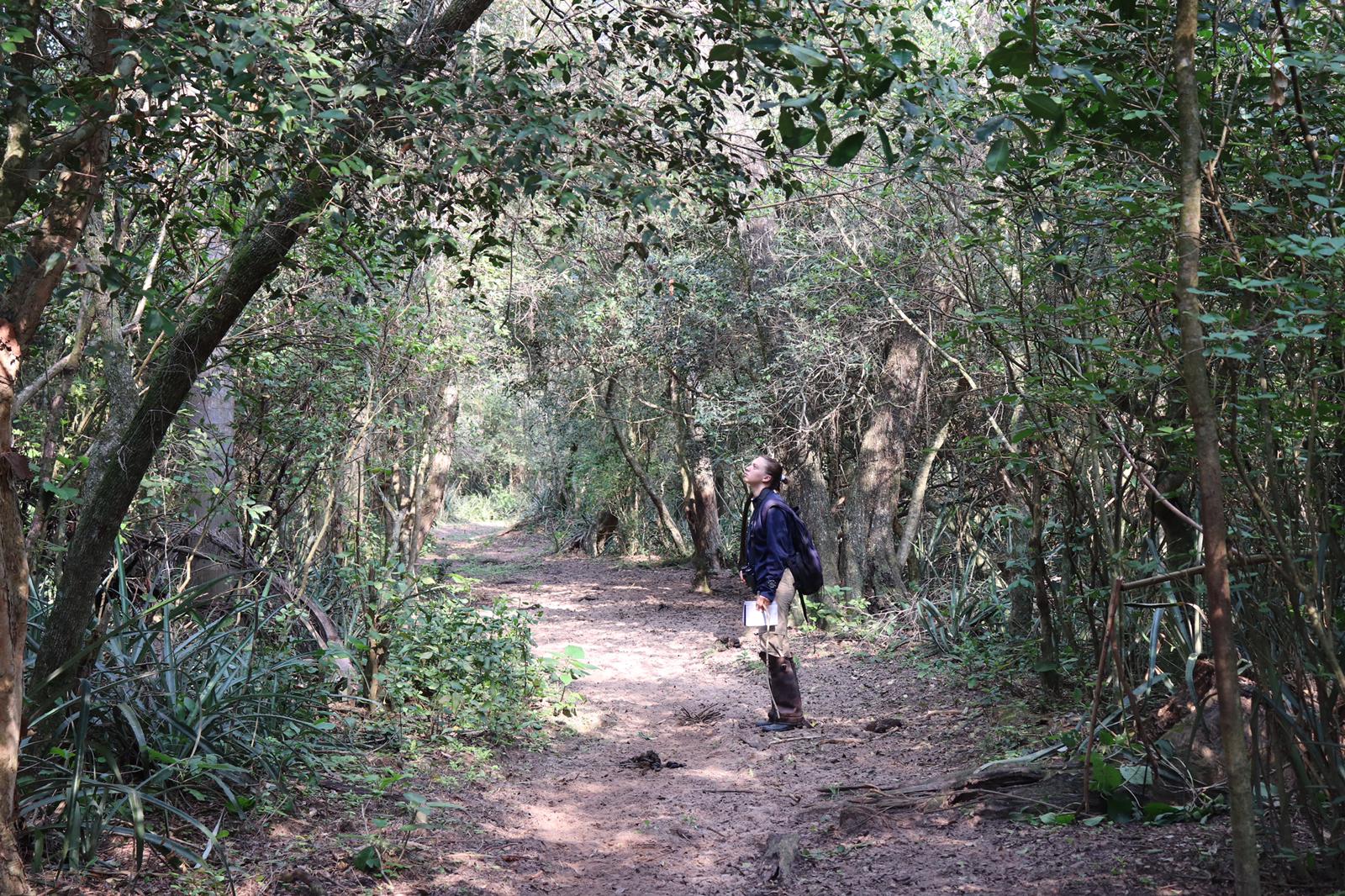Introduction
The ecological constraints model suggests that food patches are depleted in a manner related to group size, and larger groups experience more intragroup competition compared to small groups (Teichroeb and Sicotte 2009, Markham et al. 2015, Chapman et al. 2002). Due to the superabundance of leaves it has been traditionally presumed that folivorous primates do not experience within-group competition in a significant capacity, particularly in regards to limiting population size (Chapman and Rothman 2009) and it is this assumption from which the folivore paradox arises. This inference stems primarily from studies finding no relationship between group size and day range (Fashing 2001), as larger groups would be required to increase their daily travel distance to fulfill the nutritional requirements of the group members (Altmann 1974; Chapman 2000; Clutton-Brock and Harvey 1977). The existence of smaller folivorous primate groups living in an environment without food depletion contradicts the traditional socioecological model regarding the benefits of aggregation into larger groups. These include infant care such as the decreased infanticide by foreign males (Treves 2001) and defense against predation and intergroup competition (Aguiar et al. 2008). Meanwhile, the costs primarily originate from intragroup competition arising from limited resources (Markham et al. 2015). Prior to applying foraging models to the primates’ behaviour it is essential to first determine whether food depletion is, in fact, absent (as the models suggest). The answer to this question may provide insight as to why some primates prefer smaller group size.
Snaith and Chapman (2005) found evidence of limited food and intragroup competition of red colobus (Procolobus rufomitratus) in Kibale. Their project design was based upon two predictions: (1) patch depletion will occur if food availability limits group size and (2) in a depletable patch feeding time will increase with group and patch size. Furthermore, their methods allow for the control of confounding factors such as satiation, an issue that has plagued other primatological studies such as Grether et al. (1992). Their results demonstrated that red colobus monkeys do deplete patches when feeding on young leaves and do experience within-group scramble competition. However, red colobus form large groups, therefore these conclusions may not be representative of smaller folivorous groups. Tombak et al. (2011) conversely found lower food competition among guerezas (Colobus guereza), a folivorous species that form small groups. Their evidence indicates the guerezas satiate on young leaves and leave a patch prior to depletion, however within-group competition may still be a factor in the difference between red colobus and guerezas’ group size. This evidence implies that current socioecological interpretations misrepresent the feeding habits and competitive characteristics of folivorous primates. Multiple studies have demonstrated the selective feeding of folivores, as seen in Asian colobines (Yeager and Kool 2000), guerezas feeding selectively on species with clumped distributions (Harris 2006), and howler monkey’s preference for young leaves and high quality food items (Glander 1981). Identifying whether folivorous primates such as the Alouatta caraya experience patch depletion and within-group scramble competition is a step towards refining current socioecological models.
Howler monkeys (Alouatta sp.) are primarily folivorous yet they demonstrate selective feeding behaviour preferring young leaves, fruits, and flowers over mature leaves (Glander 1981) providing the opportunity for patch depletion and within-group scramble competition (Chapman and Chapman 2000; Janson and Goldsmith 1995). Patch occupancy (amount of time spent in a feeding tree, PO) and presence of preferred food items have been positively correlated in black howler monkeys (Alouatta pigra) (Plante et al., 2014). Furthermore, another study found that black-and-gold howlers (A. caraya) with larger group sizes compared to brown howlers (Alouatta guariba clamitans) travelled for a greater proportion of time (Agostini et al. 2012), suggesting the potential presence of food competition. Likewise, studies of mantled howler monkeys in Panama and Costa Rica have identified a relationship between howler group size and both food patch size (Leighton and Leighton 1982) and density of food resources (Gaulin et al. 1980). Therefore there is precedence for ecological constraint on group size in Alouatta species. Using the same methodology proposed by Snaith and Chapman (2005), two groups of black-and-gold howler monkeys (Alouatta caraya) living in separate habitats will be evaluated for presence of patch depletion and within-group scramble competition. Of the two group’s habitats, one is an urban area consisting of local’s gardens, a dirt road, and a grazing area for cows; the second consists of two isolated forest patches transected by a road. Investigation of the depletion and competition between the two groups will provide insight as to the impact of urban intrusion upon group size. If food availability is eliminated as a factor limiting group size, future studies of these two howler groups will have the opportunity to investigate the folivore paradox under a new light with the findings of this paper in mind. Ultimately, this research will add to the growing discussion of factors underlying primate social organization in the face of current socioecological theory

